Rear I/O
The rear I/O panel is unique in that it's also very DFI. Six USB 2.0 ports sit under both Ethernet sockets and a 6 pin Firewire port. Up from these is the removable Karajan audio module containing the Realtek ALC885 codec which offers content protection support in high definition as well as high quality DAC and ADCs. Coupled with being on an entire mini daughterboard the module offers a higher fidelity sound than your average onboard solution.The only problem is that it sits a bit wonky and has some give when pushing in the 3.5mm audio plugs. Being removable and since the Karajan HD audio is a standard module you can transfer this between other motherboards in the future, should you choose to upgrade to another Karajan supporting DFI motherboard.
Next to this is the coaxial digital S/PDIF in and out jacks and finally the PS2 ports. DFI forgo any legacy support here, it's all about the USB, and since there are ten to use up, having six at the back maximises what should be provided and what can be used on the front of most cases.
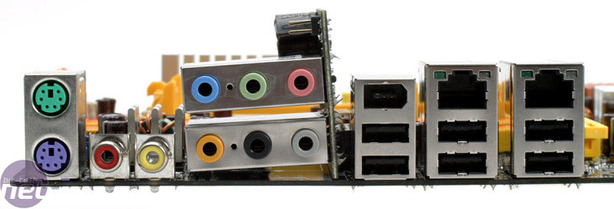
BIOS
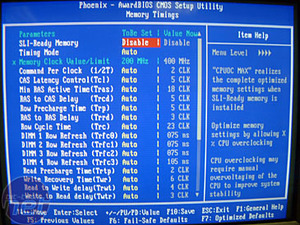
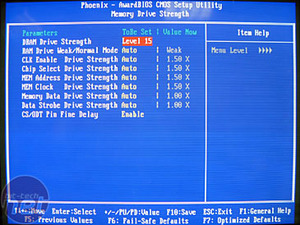
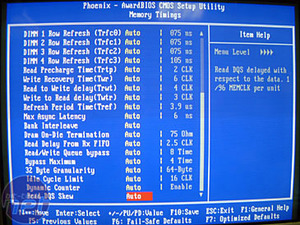
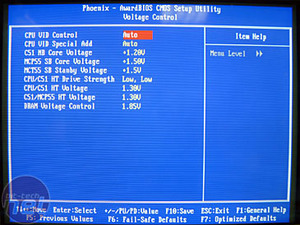
Voltage Adjustments: CPU Voltage (1.0V to 1.6V in 0.0625V increments); CPU Additional Voltage (to 121.25% in 0.10% and 0.15% increments); C51 voltage (1.20V to 1.5V in 0.02V increments); MCP55 (1.50V to 1.80V in 0.02V increments); MCT55 (1.50V to 1.80V in 0.1V increments); CPU-C51 HT (1.30V to 1.50V in 0.01V increments); C51-C55 (1.30V to 1.50V in 0.01V increments); Memory (1.70V to 3.0V in 0.02V increments);
Memory Timings:Command Rate, Tcl (CAS), Tras (Row Active Strobe Time), Trcd (Row Address to Column Address Delay), Trd (Read Delay), Trrp (Row to Row Precharge), Trc (Row Cycle Time), Trfc0, Trfc1,Trfc2,Trfc3 (Row cycle refresh time: microsecs per DIMM), Trtp (Read to Precharge Delay), Twr (Write to Read Delay), Trwt (Read to Write Delay), Twtr (Internal Write to Read Command Delay), Tref (Refresh Rate), Max Async Latency, Bank Interleave, On-Die termination resistance, Read Delay clock, Read/Write Queue Bypass times, Bypass Maximum, 32 byte Granularity, Idle Cylce Limit, Dynamic Counter, Read DQS Skew.
Additional Inclusions: Memory Drive Strength Levels, Memory Drive Strength Mode, Drive Strength for: CLK Enable, Chip Select, Mem Address, Mem Clock, Mem Data, Data Strobe CPU-C51 HT.
Just... Wow.
This is quite possibly the most comprehensive list of BIOS options I've seen for a long time. Sapphire tend to come close in memory timing league but DFI just tops it off with offering every single minute control you could possibly ever want to really eek that last bit of performance out of your entire system. Everything has a separate control down to individually clocking the PCI-Express ports, rather than the usual global clock, or controlling the HT clock for just a single inter-chip negotiation rather than all of them.
Incidentally the level of complexity can cause problems as well as offering a fantastic learning experience. When we first ran the board using default settings, but just ramping up the memory voltage to 2.3V for testing we were greeted with some instability. A quick email to DFI later and we got some suggestions that we should fiddle with the drive strengths and everything turned out hunky dory. But, what if you don't have the luxury of DFI's engineers on tap and don't know what everything means? You're pretty stuffed (unless you visit our tech support forum!).
By default DFI sets the NF590 SLI-M2R/G up to be pretty hard running so if you don't know what to play with it can cause problems. Also, if you don't realise that you have to add CPU VID Control to CPU VID Special ADD then you can cook your CPU. It's a "definately know what you're doing or know where to ask" BIOS.

MSI MPG Velox 100R Chassis Review
October 14 2021 | 15:04








Want to comment? Please log in.